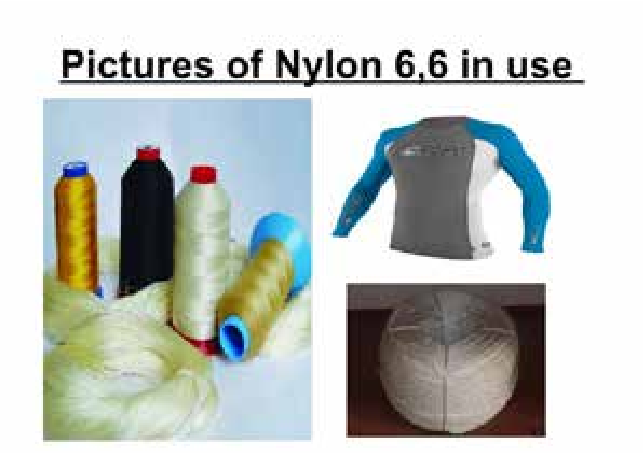Among all artificial polymers, nylon resin established itself as one of the most important discoveries of our time. In 1935, Wallace Carothers discovered nylon at DuPont which changed numerous fields and shaped everyday life since then. The original synthetic fiber gains more application options in multiple sectors including clothes production and aerospace systems. Nylon displays exceptional versatility due to its low friction coefficient and chemical resistance , and this study reviews its unique structure to show how new modern world developments utilize its special qualities.
The Foundation: Understanding Nylon’s Properties

To understand the properties of nylon applications, you need to know its features first. Nylon serves as a group of synthetic polymers and materials produced from polyamides which possess outstanding durability, mechanical properties, and state-of-the-art elasticity properties. These properties arise because nylon is made of long chain units bound together by firm amide bonds.
Key Properties That Drive Applications
Nylon gains broad usage through its multiple excellent mechanical properties and good resistance to wear .
- High Tensile Strength: Nylon stands out because its fibers withstand great stress at the same level as many metals of similar weight.
- Elasticity and Flexibility: The material stretches freely and restores its original form after release.
- ความต้านทานการสึกกร่อน: Nylon maintains its durability under heavy contact because it withstands friction contact very well.
- Chemical Resistance: The material withstands exposure to many oils, greases, and chemicals.
- Low Moisture Absorption: Nylon holds less water than natural fiber materials even though it does not block all moisture completely.
- Thermal Stability: Nylon types endure heat at normal and high temperatures without changing their material structure.
- Lightweight Nature: In spite of its high resistance nylon remains easy to carry.
- Processability: Nylon material fits different processing techniques including molding and extrusion to receive specific product forms.

Various glass filled nylon products known by numbers such as 6, 6,6, 11, and 12 exist with specific properties, including dimensional stability, developed for their intended functions. Various nylon compositions help this material succeed in many different industrial settings.
Textiles and Apparel: Where Nylon First Revolutionized Industry

The textile industry and various consumer goods, including foundation garments, were the first sectors to use nylon when it started changing manufacturing. People bought 4 million nylon clothing stockings right after they hit US markets in 1940 due to overwhelming public interest.
Fashion and Everyday Clothing

Modern clothing makers use nylon in many different ways, particularly through injection molding, because of its unique physical properties.
- Athletic Wear: Nylon shows excellent performance in sportswear because it pulls moisture away from the body and stands up well under use in running shorts and performance jackets.
- Swimwear: The textile world holds nylon as essential material for swimwear since it resists chlorine while drying fast.
- Outerwear: These outer garments benefit from nylon because the fabric shields users from rain and wind.
- Lingerie and Hosiery: Based on its initial role nylon keeps serving the functions of soft and stretchy apparel production specifically for hosiery and lingerie items.
- Blended Fabrics: Textiles mix nylon and natural fibers like cotton or wool which improves their regular fabric design.
Technical Textiles
Nylon evolves technical fabrics with enhanced heat resistance an high temperature resistance beyond their simple fashion use.
- Backpacks and Luggage: The strong and rugged nylon material suits backpacks and luggage because it feels no damage through repeated usage.
- Parachutes: The fabric of nylon brought superior lightweight strength that replaced silk as the parachute material during World War II.
- Camping Equipment: The weather-proof qualities of nylon make camping safaris and outdoor adventures easier through reliable tents and sleeping bags.
- Safety Equipment: Workers depend on nylon-made parts because safety gear requires items like high-visibility vests that help them remain visible during their work.
Automotive Applications: Enhancing Performance and Efficiency
Automotive companies use nylon because it delivers power and is heat resistant while saving weight. Automakers require nylon’s tensile strength for automotive components that are more fuel efficient and powerful vehicles which causes them to use nylon materials more often sheet stock.
Under the Hood
The demanding heat and chemical resistance present in engine rooms, combined with its low density, makes nylon work effectively.
- Air Intake Manifolds: Nylon air intake manifolds hold heat and weigh less than metal counterparts to improve performance at high temperatures.
- Fuel Systems: Nylon works perfectly as fuel tubes and vessels because it does not absorb fuel chemicals and stays waterproof.
- Cooling Systems: The end tanks of radiators along with coolant reservoirs and water pumps rely heavily on nylon materials.
- Engine Covers: Tinted engine covers use nylon for both their shaped appearance and ability to handle engine heat.
Structural Components
Nylon brings many useful traits to vehicle building elements.
- The material stays strong in outdoor conditions because nylon works perfectly in door fixtures and mirror cases.
- Nylon works well with dashboard items console pieces and inner handles because it adds impact protection and looks good.
- The positioning and padding of airbags use nylon materials to work correctly.
- Reinforced nylon helps create wheel parts used in this protection and structural elements.
Industrial Applications: Strength Meets Precision
Manufacturers depend on nylon for its tensile strength, polymeric chains mechanical strength, and exceptional performance under tough industrial environments without losing control precision.
Mechanical Components
The metal industry now uses nylon as its main material in mechanical parts.
- Gears and Bearings: Nylon works well as gear material when bearings require reduced friction because the material operates without additional lubricants.
- Conveyor System Components:The parts of conveyor systems endure longer due to nylon which resists wearing on their rollers and belts.
- Fasteners: Nylon fasteners such as screws bolts and cable ties are corrosion-free and act as electric insulators.
- Bushings and Washers: Manufacturers use bushings and washers because nylon supplies built-in lubrication.
Manufacturing Tools and Equipment
The manufacturing industry relies on nylon parts to build factory tools and main production tools polymer chain.
- Cable Management: Manufacturing companies use nylon for their cable protection systems including conduits and cable trays plus added protective sleeves.
- Protective Equipment: Special head protection and safety eyewear need nylon because this material absorbs impact well minimal bending.
- Manufacturing Jigs and Fixtures: Custom production tools use nylon parts because they maintain consistent sizes.
- 3D Printing Filament: Nylon leads the 3D printing community ho uses its material because it produces strong and flexible parts.
Medical and Healthcare Applications: Safety and Precision
The healthcare sector uses nylon materials, often used in food packaging, because they meet essential standards of biological compatibility and engineering performance nylon films.
Surgical Applications
Healthcare facilities rely on nylon for different essential medical tools.
- Sutures: Nylon monofilament sutures show strong holding power while generating low tissue reaction in medical settings chemical resistant.
- Catheters and Tubing: Steel-grade nylon supports tubings and catheters because it both works well and stays safe inside the body.
- Surgical Instruments: Nylon becomes an essential material for both the handles and parts of surgical tools because it helps make them light and easy to use.
- Stents and Implantable Devices: Medical professionals use nylon in several implantable devices due to its body-safe properties.
Healthcare Equipment
Medical facilities rely on nylon products as their materials, known for their electrical insulation, appear in many healthcare equipment types.
- Prosthetics and Orthotics: Nylon makes up the basic parts of prosthetic limbs and orthopedic support items because it stays strong and is easy to use.
- Medical Textiles: Nylon appears in the fibers of medical bandages and compression garments along with other medical textile elements.
- Laboratory Equipment: The laboratory industry regularly selects nylon materials to produce test tubes and pipette tips plus other research supplies elastic modulus.
- Hospital Furniture: Components of hospital beds, wheelchairs, and other medical furniture benefit from nylon’s durability and ease of cleaning.
Construction and Building Materials: Durability and Innovation
Construction companies use the application of nylon features to develop better building materials despite current material problems.
Structural Applications
Several different applications use nylon in modern building construction.
- Nylon fibers work as alternative steel reinforcement in concrete by preventing cracks while eliminating corrosion issues corrosion resistant.
- Steel bridge and building expansion joints create movement flexibility using nylon components.
- The nylon element plays a significant role in both chemical anchors and fastening systems for support applications polyamide nylon.
- Hinges and handles with nylon material work well by running smoothly and staying strong automotive components.
Building Systems
Nylon appears in all parts of building systems with these essential uses:
- Plumbing Components: The pipes vinyl and metal connections made from nylon show excellent resistance against harmful compounds while remaining sturdy moisture resistance.
- Electrical Systems: Nylon works well as an insulator for electric system parts like wire wraps and junction boxes plus electrical conduit.
- HVAC Components: The temperature-resistant qualities of nylon make the material essential for use in HVAC ducting systems along with HVAC dampers and other equipment.
- Roofing Materials: Manufacturers include nylon to artificial roofing materials because it produces stronger materials with improved weather protection.
Sports and Recreation: Performance and Safety
Nylon serves dual purposes for sporting goods producers and in the production of guitar strings by improving player performance and utilizing its physical properties to create necessary protection features nylon compared
Equipment and Gear
Nowadays you find nylon material throughout all types of sports destinations:
- Climbing Ropes and Harnesses: The high strength and low weight of nylon material led companies to use it for building rock climbing security systems.
- Fishing Line: Net fishers rely on monofilament nylon lines because they work both strong and adaptive at the same time.
- Tennis Racket Strings: Tennis Racket Strings Made of Nylon Deliver Control and Power Benefits to Most Players.
- Bicycle Components: Bicycle parts function better because nylon enhances derailleur and brake cable performance sheet st.
Protective Equipment
Sports safety equipment uses nylon materials for their cycle wear as its main composition.
- Helmets: Sports helmets from the outside to inside lining feature nylon material construction.
- Protective Pads: Sports equipment including shin guards uses nylon for its strong resistance to impacts.
- Sports Uniforms: Sports Teams Trust Nylon Support for Their Uniforms When They Play Football and Hockey heat deflection temperature.
- Water Sports Equipment: Many water sport devices include nylon elements in their structure such as surfboards kayaks and paddleboards.
Electronics and Electrical Applications: Insulation and Protection
Nylon provides its superior insulating and stable thermal traits absorb moisture, including its high melting point, to serve many electronics business functions.
Electronic Components
The electrical and digital sector needs nylon for its key operating parts.
- Wire and Cable Insulation: Electric cables keep their insulation better than other materials because nylon acts as a great electrical barrier.
- Circuit Board Standoffs: The electrical circuit standoffs need nylon because it functions as an insulator while handling high temperatures.
- Connectors and Terminals: The electrical connectors use nylon because this material stays firm under all conditions while creating effective insulation.
- Cable Management: Organized electronic wiring gets support from zip ties cable wraps and conduits.
อุปกรณ์อิเล็กทรอนิกส์สำหรับผู้บริโภค
Nylon appears in multiple designs of consumer products:
- Smartphone and Laptop Cases: Due to its excellent shock absorption quality nylon becomes an excellent option for smartphone and laptop case designs.
- Headphone Components: Headphone builders choose nylon material for both headbands and supporting parts because it stays flexible while sustaining heavy use.
- Small Appliance Parts: Nylon forms a part of the interior units in small kitchen appliances including vacuum cleaners.
- Computer Cooling Systems:Nylon stays effective when used in computer cooling fans and elements because of its natural heat tolerance.
Aerospace and Defense: Where Performance is Critical
Aerospace defense organizations use enhanced nylon materials, including nylon parachute material known for its dimensional stability and produced from adipic acid , to meet performance requirements in their critical applications.
Aircraft Components
Aircraft manufacturers now use nylon materials to build total aircraft systems.
- Interior Components: Nylon enables weight reductions by serving as the basic structure for aircraft interior elements including seats frames trays and panel materials.
- Fuel Systems: Nylons resistance against fuel chemicals allows manufacturers to use it for fuel system parts.
- Wiring Harnesses: Organizational systems of electrical wires in aircraft depend on nylon materials.
- Control Surfaces: The design of certain controls receives weight savings by using nylon materials.
Defense Applications
Military equipment leverages nylon’s durability:
- Body Armor: Military units use ballistic vests made from many nylon fabric layers to halt incoming ammunitions.
- Equipment Carrying Systems: Military troops use nylon materials in backpacks and carriers because they withstand harsh weather.
- Helmet Components: Modern military helmets use nylon materials for their parts..
- Parachute Systems: Military parachutes still depend on nylon because no other material equals its strength with low weight.
Sustainability Considerations: Challenges and Innovations
As people care more about protecting the environment, the nylon business sector’s commercial production, which relies on the structure of carbon atoms, deals with both environmental hurdles and open doors for its future.
Recycling Initiatives
Organizations in this field are creating new solutions for handling the material.
- Mechanical Recycling: After its use nylon yarn from carpets can go through mechanical recycling methods to produce fresh raw materials.
- Chemical Recycling: Specialized methods convert nylon polymers into molecular components for new nylon production.
- Closed-Loop Systems: Some nylon producers collect these products through their own take-back systems.
- Recycled Content: More nylon companies now integrate recycled materials into their products to lessen their demand for raw nylon supply.
Bio-Based Alternatives
Innovation continues with bio-based alternatives:
- Nylon production can be switched from petroleum to castor oil to make nylon 11 and nylon 12.
- These bio-based solutions help lower environmental impact because they produce less carbon emissions than standard nylon glass fibers.
- Most types of nylon made from bio-based materials have similar product performance as petroleum-based nylon versions.
- Bio-based nylon keeps expanding since industries and buyers start choosing sustainable options over traditional methods.
Future Directions: Emerging Applications and Innovations
Repeatable research and injection molding engineering work helps build nylon applications and materials.
Advanced Materials Science
Scientists are discovering more ways to improve nylon’s uses in their experiments.
- Nanocomposites: The addition of nanomaterials into nylon structures strengthens the material and makes it resist fire better.
- Conductive Nylons: Introducing conductive materials produces electrical conductivity in nylon to meet precise engineering requirements.
- Enhanced Thermal Properties: Nylon performance enhancements include new chemical combinations that withstand higher temperatures.
- Antimicrobial Properties: Healthcare and food service nylon products now contain built-in antimicrobial protection glass transition temperature.
Emerging Applications
New uses continue to develop through advancements in the injection molding process :
- Additive Manufacturing: The unique features of nylon benefit the production process through 3D printing and other additive manufacturing methods.
- Smart Textiles: Technology developers use nylon fabrics as the foundation to embed digital elements into new smart clothing products.
- Sustainable Infrastructure: The building industry now uses recycled nylon to manufacture infrastructure parts heat resistance.
- Medical Innovations: Research groups are studying how nylon can help human tissues live better while delivering medicines safely.
บทสรุป
Different industries benefit from nylon use and show how materials science improves our technology base and everyday existence. The creation that started as a science experiment now forms a basic part of many devices we use in healthcare and outdoor activities.
The development of nylon will remain important because materials technology progresses alongside sustainability objectives and environmental considerations. Human inventiveness keeps growing nylon usage options which demonstrates our ability to adapt resources to meet current requirements and challenges.
In today’s fast-paced technological era nylon stays popular because its many uses will keep working for the next several decades.

